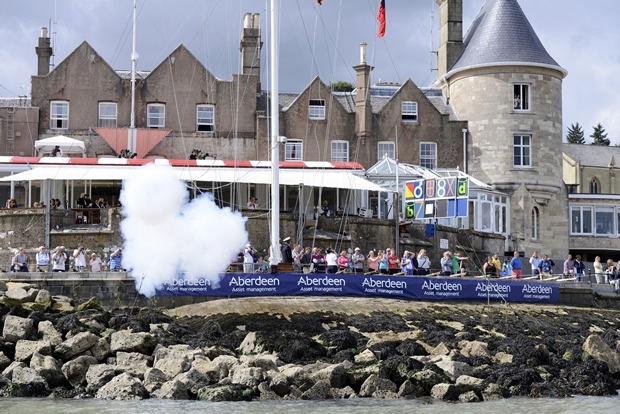
New race management structure
The biggest changes to the race management structure at Aberdeen Asset Management Cowes Week in many years have just been agreed by the organising yacht clubs of Cowes Combined Clubs.
“The idea is to have consistent race management for as much of the week as possible, in order to give a higher level of continuity and consistency,” says Sailing Director Stuart Quarrie.
Under the previous triumvirate system, three different groups of race officers ran most of the racing, with each group in charge for periods of just two or three days. However, the event had already started to move away from that model, with Cowes Corinthian Yacht Club running the White Group committee boat for the entire event, the Royal Corinthian Yacht Club running the Black Group committee boat, and a consistent team of course setters through the event.
“These new changes are therefore evolution, not revolution,” says Quarrie, “but they are still a big step forward. Since 1964 Cowes Week has become much more complex as the event has got bigger and at the same time competitors, understandably, demand better race management.”
Each of the organising clubs (Cowes Combined Clubs) will be taking responsibility for specific areas of responsibility for the duration of the event for 2015, as follows:
RORC (incorporating Royal Corinthian Yacht Club): Black Group Committee Boat
Royal Southampton Yacht Club: White Group Committee Boat
Royal Southern Yacht Club and Island Sailing Club: Bramble and Shrape lines
Royal London Yacht Club and Royal Thames Yacht Club: RYS line (first half of week)
Royal Yacht Squadron Racing: RYS line (Wednesday to Friday)
In addition, Cowes Town Regatta, assisted by the Cowes Corinthian Yacht Club will run all racing on the final Saturday.
For the first time, the regatta will also have the use of two dedicated shortened course boats, which will not be tasked with any other roles, meaning they will always be on standby for a quick deployment.
“Not having this facility has been a problem in the past, but it will now be much easier to finish classes if the sequence for the later starts on the RYS line are delayed or if weather conditions necessitate a shorter course,” says Quarrie.
The motivation for introducing many of these changes was in order to achieve improved continuity of race management throughout the Week, and the Sailing Instructions have also come under close scrutiny. They have been simplified wherever possible, with standard Racing Rules of Sailing applying in many more situations than previously. As a result, the 2015 SIs will be around one-third shorter than in recent years, making them easier for both competitors and race officials to digest.
“Overall, pretty much all the clubs saw the benefit [of these changes], with an overwhelming majority in favour of the basic principles, and all detailed proposals subsequently carried unanimously,” says Quarrie. “They are designed to prevent the entire event from being too complex and we’re confident that the improved continuity and consistency will improve the experience for competitors.”
While the underlying principles of the changes are now established, the detail of how it works will be analysed closely after the 2015 regatta to identify any improvements that can be made for the following year.








Latest Comments
Add a comment - Members log in